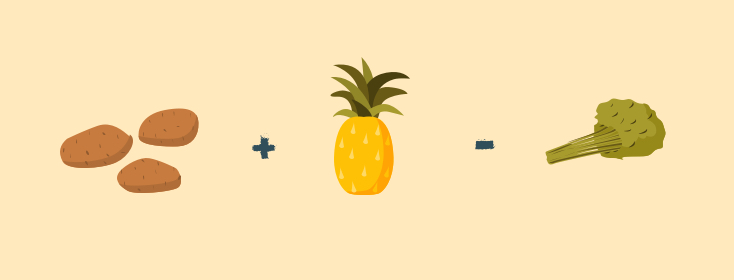The Carb and Fiber Connection
If you have diabetes, there is a good chance that you hear about (and talk about) carbohydrates and fiber on a regular basis. It is hard to mention carbohydrates without also talking about fiber (and vise versa). Have you ever wondered how these two nutrients are connected? This article will review the connection between carbohydrates and fiber and review the importance of dietary fiber.
There are 3 main forms of carbohydrates:
- Starch
- Sugar
- Dietary Fiber
Dietary fiber is a type of carbohydrate found in plant foods. Dietary fiber is a non-digestible form of carbohydrates. It comes in 2 main forms:1
1. Soluble Fiber
Soluble fiber slows down digestion (by slowing stomach emptying) and thus the rate at which carbohydrates and other nutrients are absorbed into the bloodstream. As a result, soluble fiber can interfere with the absorption of dietary fat and cholesterol (helping to lower LDL cholesterol) and helping to control blood sugar levels following a meal by reducing rapid rises in blood sugar. 1
Food Sources of Soluble Fiber:2
- Beans and peas
- Fruits (E.g. apricots, grapefruit, mangoes and oranges)
- Oats (E.g. oat bran and oatmeal)
- Nuts and seeds
- Vegetables (E.g. Brussels sprouts, turnips, sweet potatoes and asparagus)
2. Insoluble Fiber
“Insoluble fiber provides ‘bulk’ for stool formation and speeds up the movement of food and waste through the digestive system, which can help prevent constipation” 1
Food Sources of Insoluble Fiber:
- Fruits
- Nuts and seeds
- Vegetables (E.g. cabbage, lettuce, onions, bell peppers, the outer husk of corn kernels, skin of cucumbers, and peas) 3
- Wheat bran
- Whole grain foods (E.g. brown rice and whole grain breads)
“Both soluble and insoluble fiber make you feel full, which may help you eat less and stay satisfied longer”.1 Eating less and feeling satisfied are both helpful when it comes to weight management/weight loss.
Recommendations for dietary fiber and intake of fiber rich foods
2017 Standards of Medical Care In Diabetes:4
- “Carbohydrate intake from whole grains, vegetables, fruits, legumes, and dairy products, with an emphasis on foods higher in fiber and lower in glycemic load, should be advised over other sources, especially those containing sugars."
- “As for all Americans, individuals with diabetes should be encouraged to replace refined carbohydrates and added sugars with whole grains, legumes, vegetables, and fruits.
The 2015- 2020 Dietary Guidelines for Americans for daily intake of dietary fiber are as follows:5
Females
- Age 19-30: 28 grams
- Age: 31-50: 25.2 grams
- Age: 51 and older: 22.4 grams
Males
- Age 19-30: 33.6 grams
- Age: 31-50: 30.8 grams
- Age: 51 and older: 28 grams
Dietary fiber on the food label:
- Dietary fiber on the food label can be found right below the total carbohydrate amount
- Foods with 2.5 grams of fiber or more per serving are considered a good source of fiber 6
- Foods with 5 grams of fiber or more per serving are considered an excellent source of fiber6
Current fiber intake in United States:
- In the United States, most individuals are far from meeting their daily fiber needs.
- “The average amount of fiber a person in the United States consumes is 10 to 20 grams per day”.7
Adjusting carbohydrate count based on dietary fiber amount:
The American Academy of Diabetes Educators (AADE) recommends:
- If a food contains greater than 5 grams of fiber per serving that half the fiber amount be deducted from the total carbs for a new total carb amount. This rule is more commonly used for those who take insulin at meals. Example:
- ½ cup of Fiber One Cereal contains 25 grams of carb and 14 grams of fiber
- 7 grams (half of 14) is deducted from 25 for a new total carb amount: 18 grams
Net Carbs: While there is no legal definition of net carbs, it is typically the new total carb amount once dietary fiber and sugar alcohols have been deducted from the total carb amount.
How do you meet your daily fiber needs? Please share with the Type2Diabetes.com community.

Join the conversation